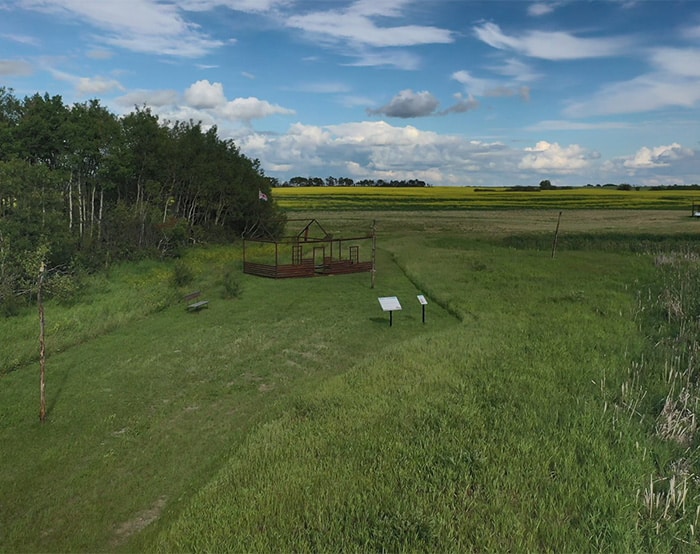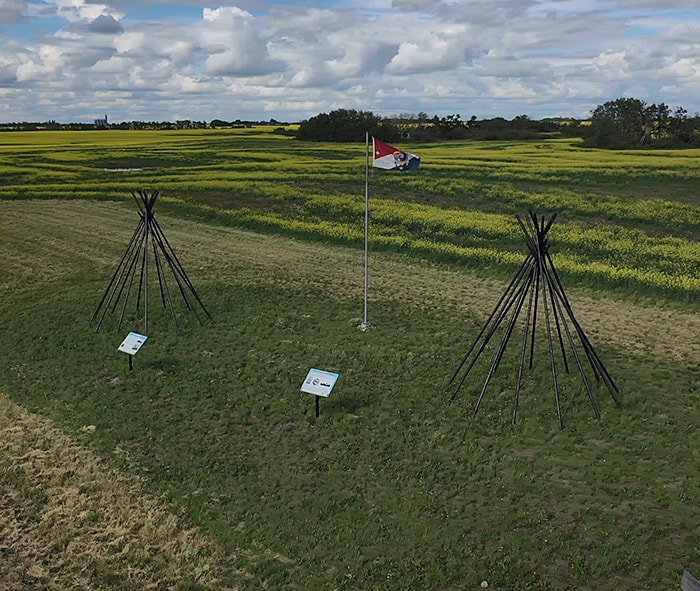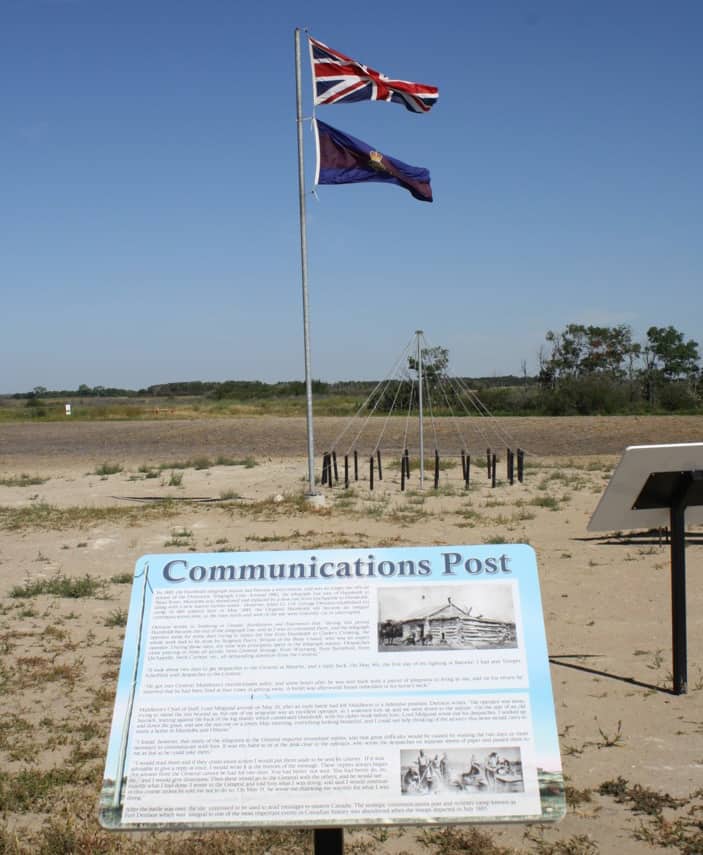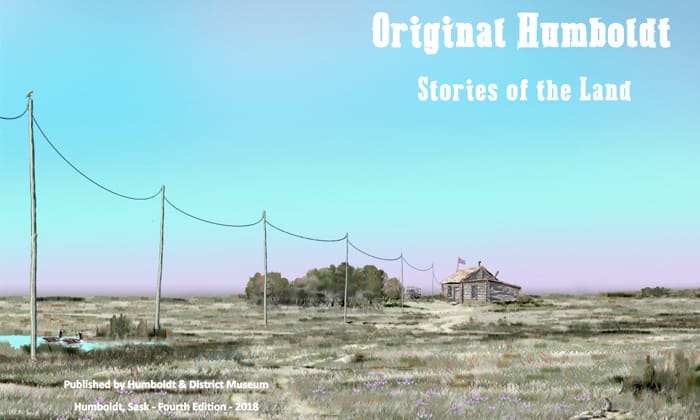When you take your first steps onto the Original Humboldt site, not only will you enjoy a leisurely walk along the grassy trails and some fascinating art installations, but you will be part of the latest chapter in the story of this historic land.
Telegraph Station
Humboldt artist Murray Cook forged this scale replica of the log cabin built in 1878 that served as the Humboldt Telegraph Station and home to the Weldon family.
Learn more about Catherine Weldon, the first female telegraph operator in the west, and her sharp-shooting sister Maggie Liggett in the remarkable stories about life along the telegraph line.

Red River Cart
The Humboldt Telegraph station lies right alongside the Carlton Trail which was the main artery bringing people and goods into the west.
The Red River Cart was the vehicle of choice for Métis freighters and hunters along the Trail. The carts were versatile, and could be repaired with natural materials found along the way. Truly an engineering marvel and an enduring symbol of the role of the Métis in the development of the west.

This representation of the Red River Cart was created by artist Don Wilkins of Davidson, SK, and the flag was presented by the Métis Nation of Saskatchewan.
Chief Whitecap and the Dakota
Two tipis, a flag and storyboards written by members of the Whitecap Dakota First Nation were installed in 2017. They share the story of Chief Whitecap and the Dakota and their relationship with the Original Humboldt site.
In the spirit of reconciliation and cooperation, a partnership with the Whitecap Dakota First Nation resulted in this stunning addition to the story of the land.

Telegraph Line
A replica of a telegraph line constructed with poplar poles reflects the fragility of this early communications system. This site is the only place in Canada which commemorates the National Historic Event of building the Dominion Telegraph Line.
The path leads you down a path to the Ducharme house, onetime home to George Weldon’s co-lineman, Joe Ducharme. Joe and George would ride alongside the telegraph line in every kind of weather to ensure it stayed in good repair and that Humboldt stayed connected to the rest of the country.

The Ducharme House was designed and built by Garry Jenkins and Reynold Fortowsky.
Military Tents
Four hundred and sixty soldiers camped on the land in tents just like these during the 1885 North West Resistance under the command of Lt. Col. George T. Denison of the Governor General’s Body Guards.
The Governor General’s Horse Guards Calvary and Historical Society formed a joint partnership to dedicate a memorial plaque to remember the service of the Regiment in Canada.



